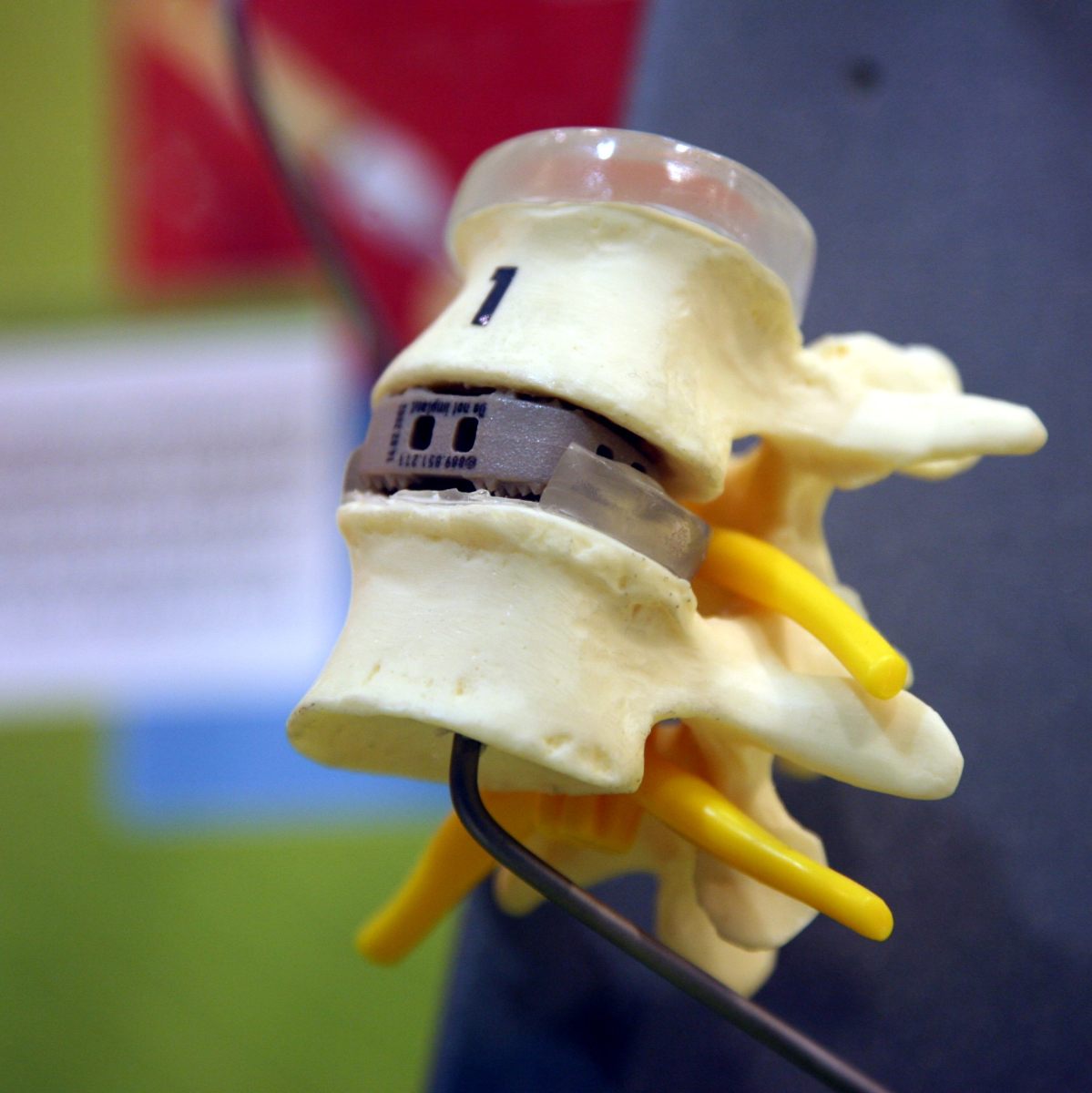Bioengineers from Cornell University have constructed replacement intervertebral discs which support normal mechanical function in the spines of rats, paving the way for new back pain treatments in humans.
Back pain is extremely common, affecting up to 70% of adults globally. One of the common causes is disease or damage to the intervertebral discs, the circular pads of cartilage which sit between the vertebrae in the spine and act as shock absorbers.
 |
| A mechanical disc replacement |
These discs may be inflamed or ruptured ('slipped') which can cause pain by putting pressure on nearby nerves or the spinal cord. Although many of these conditions heal themselves or can be helped with physiotherapy, surgery is often necessary. It is estimated that between 1.5 and 4 million cases in the US alone require surgery each year, costing billions of dollars. Discs which are damaged beyond repair are currently replaced with mechanical devices, and while these can be effective they are prone to mechanical wear, dislodgement and loosening over time. In recent years efforts have been made to develop alternative therapies which make use of techniques available in tissue engineering.
According to a study published this week in the journal PNAS, a research group led by Dr Lawrence Bonassar has managed to construct living discs from sheep cells, which consist of a gelatinous core surrounded by a tough collagen outer layer. These engineered discs were inserted between the vertebrae of rats, and then examined over time using MRI and CT scans. For six months the discs stayed in the correct position and effectively maintained space between the vertebrae. They were also shown to have similar mechanical properties to real intervertebral discs in terms of their resistance to compressive stress, and produced functional living tissues which enabled them to integrate completely with the rat vertebrae.
This study shows that there is the potential to develop a tissue-engineered disc implant for use in the treatment of Inter-vertebral disc damage in humans, which would be a great improvement to the mechanical devices that are currently used, helping to ease suffering for millions worldwide.










Comments
Add a comment